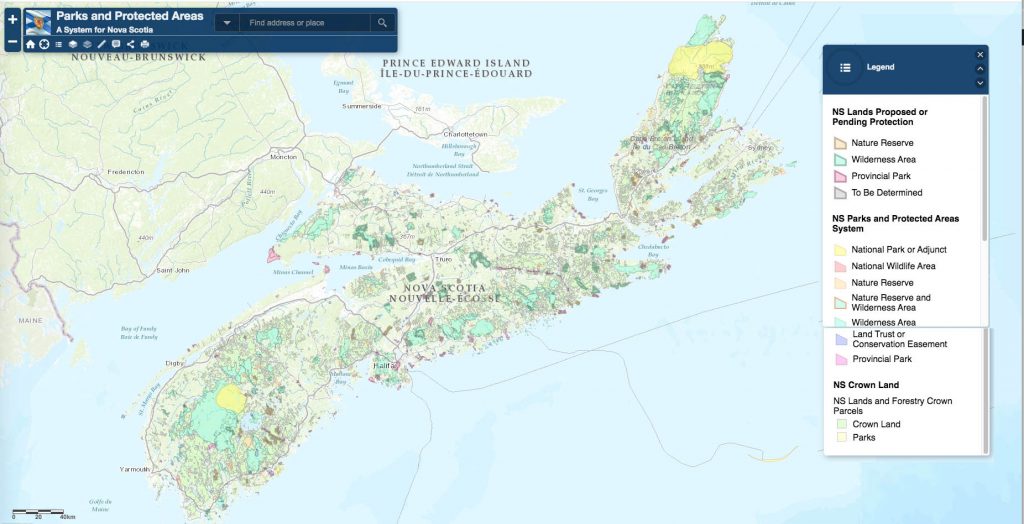Re: A question to the Nova Scotia Liberal Leadership Candidates: How do you plan to align Nova Scotia with the federal Liberal Government’s commitment to 30% Protected Area by 2030? 2Jan 2021
Jan 4, 2021, Received from Labi Kousoulis
Thank you for posing this question as it’s a very important question that does need to be addressed. A Kousoulis government will work with federal counterparts to ensure both governments are aligned on this subject. As leader, I will expect my minister responsible, to have an open dialog with the federal counterpart responsible. The environment does not adhere to political boundaries, meaning we all must work together to preserve what we have.
As I have mentioned in my recently released environment strategy, areas of ecological value and homes to endangered species will be protected by my government. As Premier, I will ensure that our endangered species such as the Mainland Moose are protected from threats, and that we look at environmental issues with the lens of biodiversity.
As you know five years ago, I approached Premier McNeil to outline the need for an independent report to government on how to protect the future of our forests. These actions led to the Lahey Report. This Report should have already been acted on, and as the Premier, I will move the Report forward for immediate implementation prior to calling the next election.
Please take a moment to look at my policy here: https://votelabi.ca/environment/ where I also speak on the reinvestment of resource based royalties from government, and take action on carbon reduction.
Jan 5, 2020, Received from Iain Rankin:
Increasing national and international protected area targets reflect growing scientific consensus and public recognition that expanding protected area networks is critical for biodiversity conservation.
Nova Scotia is not immune to the global biodiversity crisis. That means embracing meaningful expansion of our provincial protected areas network. The public benefits of protecting land and water are numerous: biodiversity conservation and restoration, indigenous reconciliation, tourism, recreation, preserving Nova Scotia’s unique quality of life, and economic diversification. While we are among the top provinces for land protection percentage, I believe our current mandate of 13% land protection is not sufficient. Therefore I would be mandating the following actions for the Minister of Environment and Minister of Lands and Forestry to action in my government.
1. I have already committed in this campaign to fully implementing the remaining list of lands from the 2013 Parks and Protected Areas Plan. That puts us just over 14% in this calendar year.
2. The 30% target of Canada’s land being protected by 2030 is a target that I support at the national level, but currently out of reach for Nova Scotia given our history of settlement and relatively high proportion of private lands (approx 65%). We can however make progress in that direction through current partnerships with land trusts and the Mi’kmaq, and potential advancement of carbon credits, as part of our cap and trade system that I passed legislation for in 2017.
3. Making a concerted effort to contribute more to the federal target presents Nova Scotia with a unique opportunity to partner with the federal government, leveraging federal dollars to accelerate land protection for the benefit of Nova Scotians. In 2018 the feds committed over $1.3 billion for nature conservation, including $175 million to help reach protected area targets. Last year I helped secure $14.3 million for Nova Scotia, primarily for land acquisition and increasing the capacity of the Province, indigenous partners, and land trusts to protect and conserve land. By working towards more protected areas Nova Scotia can continue accessing federal conservation dollars.
4. I have committed to developing a process to identify additional lands for protection, after the parks and protected plan is completed. This will be part of a broader protected areas strategy that is informed by science and developed in partnership with non-government stakeholders. That strategy would at a minimum include the following elements:
– As part of ecological forestry implementation, identification of candidate protected areas on Crown lands with a priority of conserving and restoring biodiversity while demonstrating indigenous reconciliation, enhancing quality of life for Nova Scotians, providing new economic opportunities, and mitigating climate change impacts.
– Prioritizing the protection of unique and sensitive natural areas such as old forests and species-at-risk habitat
– Support indigenous lead land protection by establishing Indigenous Protected and Conserved Areas
– Accelerate implementation of the New England Governors / Eastern Canadian Premiers Resolution on Ecological Connectivity, Adaptation to Climate Change, and Biodiversity Conservation to ensure a holistic government approach to protected areas and connectivity.

